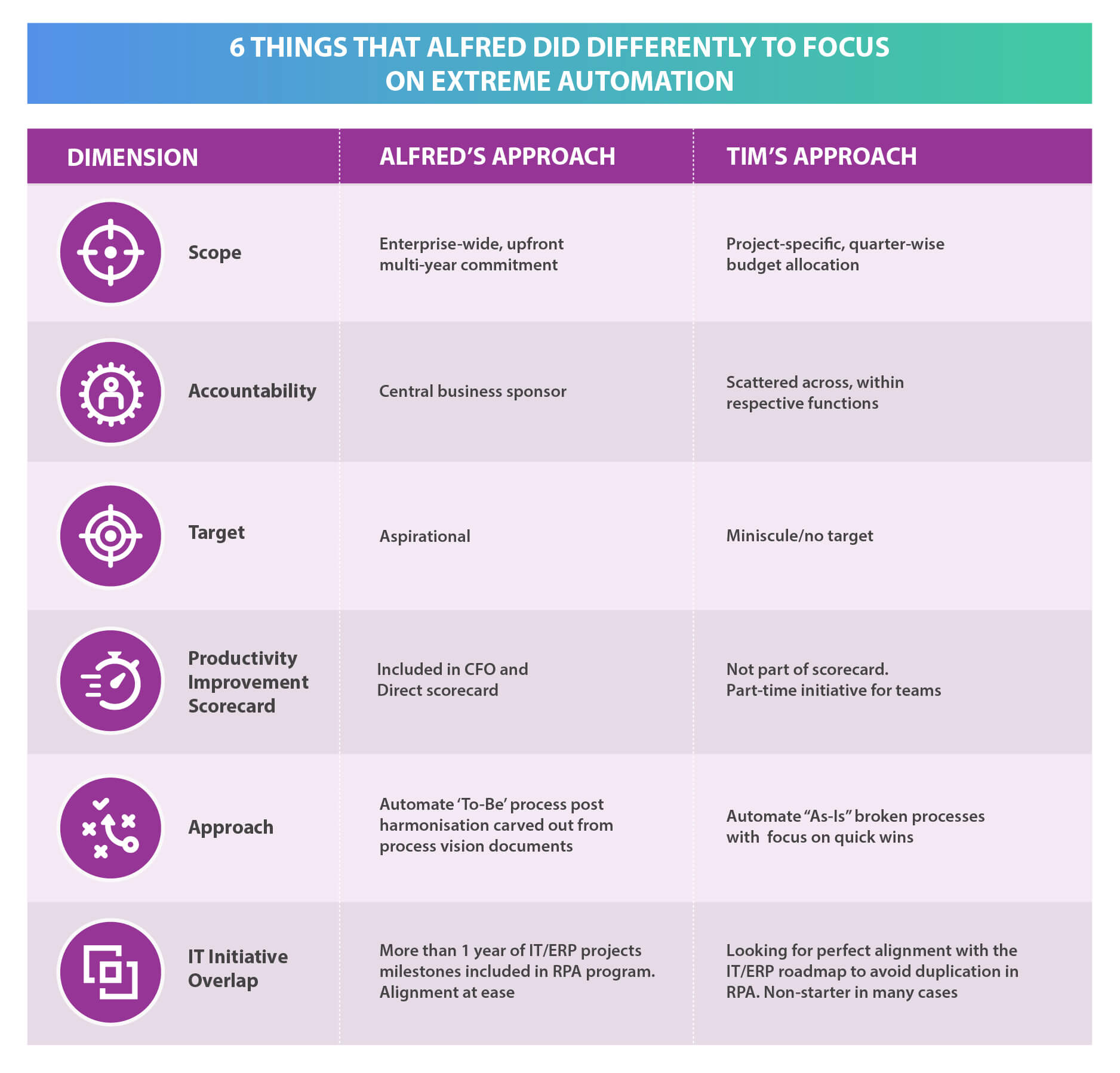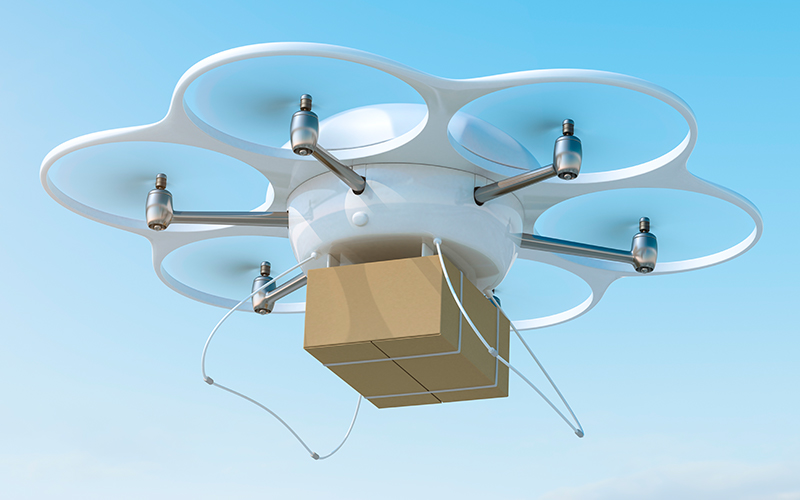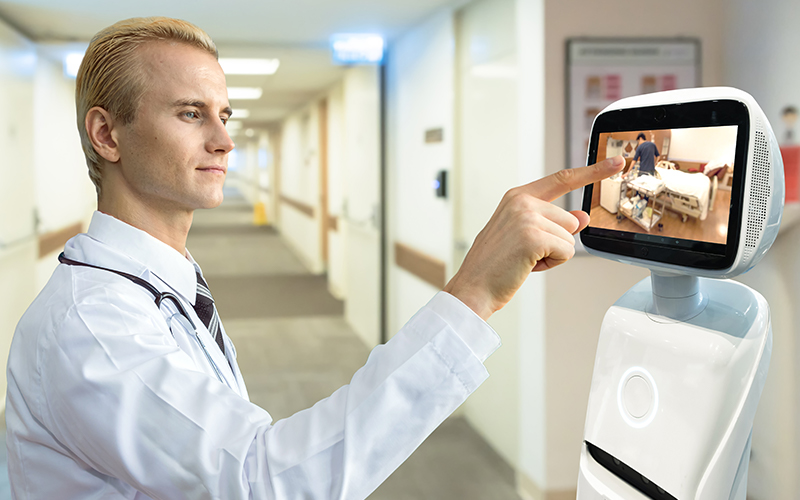Robotic Process Automation
A Tale of Two Organizations – Role of Service Providers in Extreme Automation
“It was the best of times, it was the worst of times, it was the age of wisdom, it was the age of foolishness, it was the epoch of belief, it was the epoch of incredulity, it was the season of Light, it was the season of Darkness…” -
Opening paragraph of Charles Dickens’ novel, A Tale of Two Cities
Two years ago, we held a similar discussion with CFOs of two large organizations; let us call them Alfred and Tim (names masked). Both of them were excited when we presented an automation roadmap and what Robotic Process Automation (RPA) can accomplish in their organization. Now, Alfred’s organization has implemented hundreds of live bots and reported over 34% productivity improvement, in addition to significant improvement in finance-related business metrics. Tim’s organization is still on proof of concept phase in their RPA journey due to several policy-level blockades.
According to Gartner, around 80% of finance leaders have already implemented RPA, but many organizations still have fewer than ten bots implemented (Source: Forrester). While our proposals to both Tim and Alfred had all the essential elements of successful RPA proposals, in this article, let us analyse why the two organizations had different automation journeys. We will also see the role of BPM service providers in enabling “extreme automation.”
The global economy has been reeling under pressure with losses in trillions due to the COVID-19 pandemic. Businesses worldwide are looking for means to curtail losses. For the most part, unavailability of employees, who are in lockdowns or quarantine, has been a critical issue for most businesses. This is when the power of extreme automation becomes necessary. However, automation alone may not be the most effective means to bring about overall business transformation. In order to unveil the true benefits of automation, critical design thinking and process standardization are essential. We will highlight the importance of preparing an organization and its business processes for extreme automation.
Alfred vs. Tim
In the perspective of the RPA project, there were naysayers in both organizations, incessantly debating on ERP improvements vs. digital transformation. While Tim was looking at the project more from a tactical standpoint and wanted to get disparate teams convinced and self-aligned, Alfred treated the automation program as an organizational change management program and committed with sufficient business and IT resources.
Quoting President Kennedy, Alfred believed in “the journey to Moon, an ambitious RPA journey with an aspiration to save over a million man-hours across the service provider and client - not because they are easy, but because they are hard; because that goal will serve in organizing and measuring the best of our energies and skills.”

“Automate every amenable process post harmonization.”
The Role of BPM Service Providers in Enabling Extreme Automation
While excellence can be found in upstream automation done directly by clients, automation driven by BPM service providers is far more successful with tangible efficiency gains, thanks to “beyond contractual commitment” clauses. A service provider successfully deploys RPA in large scale by leveraging several components such as the following.
Human-ware operating model:
Bots alone cannot provide the required effectiveness in business processes. Organizations need an exception handling setup in which process specialists are empowered (through reskilling) to provide accurate solutions at the right time. This involvement of process specialists at the right time to handle process exceptions improves the process efficiency manifold. This concept of human workforce augmented by extreme automation is known as “human-ware.”Flexible commercial framework:
Incentivizing extreme automation is essential to ensure a fair share of gains for both the service provider and client.Multitier governance model:
The entire team also needs to have a clear governance model with frequent updates of what is working, and correct the course as necessary. A multitier governance from use case level to program level is very critical to success.Factory-based implementation approach:
Rather than focusing on the main project vision as a single goal for all teams, create individual goals that are easily achievable and contribute effectively to the overall vision. Splitting the vision into use case factory (pipeline creation), development factory, testing factory, and support factory helps in better throughput.Flexible cloud-based infrastructure:
Cloud-based infrastructure will be an essential component of successful RPA implementation. Scaling of operations would be efficient and easy with a cloud infrastructure.BOT operations command centre:
Robotics Process Automation (RPA) Operations Command Centre is comparable to an Air Traffic Control room. Much like Air Traffic Controllers directing aircrafts through controlled airspace, the RPA support and monitoring team uses real-time robot traffic information to skilfully direct the bots on the operations floor through various applications and servers. The command centre that seamlessly integrates each module and provides overall visibility is the core aspect of large-scale bot operations.
Conclusion - The Future Powered By Human-ware
Enterprise roll-out and sustenance of RPA programs requires strong process knowledge with an empathetic mind-set towards human-ware service delivery, in addition to technological prowess. An aspirational goal with the digital mind-set and human-ware approach, rather than pure automation, will be the future of massive automation projects that drive value for organizations.
This article was originally published by The Evolving Enterprise.






